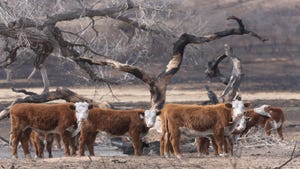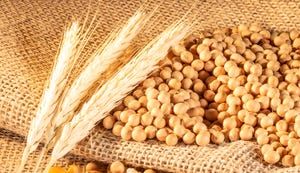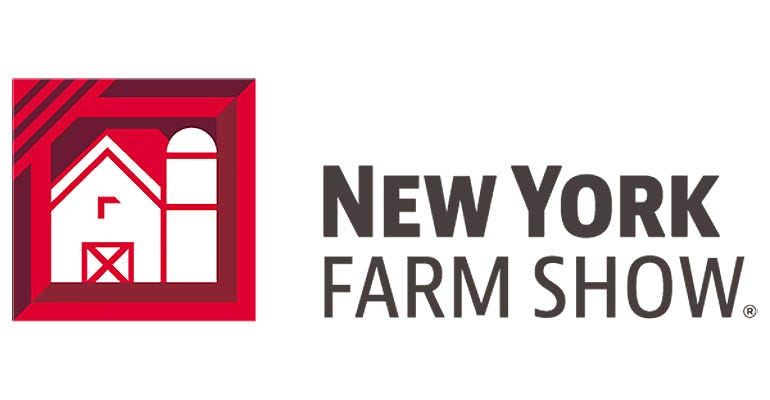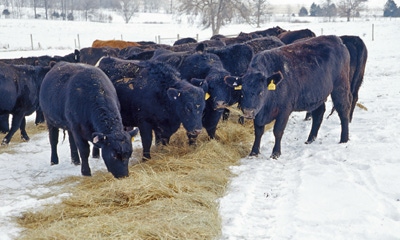
Winter weather can affect a cow's nutritional requirements. Cold, wet and windy conditions increase her energy needs. While farmers control just how much feed is available, University of Missouri Extension livestock specialist Gene Schmitz says that they must also control the environmental conditions in which the cows eat and drink.
Maintaining body condition in cattle can be tough from December through February. Proper nutrition with a focus on high-energy diets is major component for feeding programs. Many beef producers will closely monitor feed energy intake during the winter, but they might be overlooking just where and when the nutrients are being offered to cows.
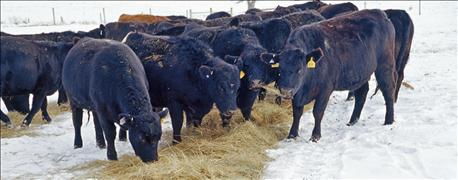
CONSIDER ENVIRONMENT: To reduce cow energy requirements in winter, farmers need to analyze access to shelter. Feeding and loafing areas should be covered and dry.
In order to help cattle deal with the cold stress and maintain body condition, Schmitz recommends beef cattle producers keep these three concepts in mind when caring and feeding cattle in winter:
1. Reduce exposure to the wind. Consider bringing cattle closer to the barn or providing a winter shelter in the pasture. At the least, winter cattle in pasture with access to a tree line. This allows cows to find respite from the wind, which can influence critical temperature in cattle.
2. Keep the cattle as dry as possible. When periods of heavy snow are predicted, bring cattle into a loafing shed. Beef producers should also keep feeding and loafing areas dry.
3. Provide plenty of water. Make sure that water is available to cattle at all times. Schmitz warns that restrictions in water consumption reduce feed intake.
4. Consider feeding in the evening. Incremental heat production from digestion is greatest four to six hours after feed is consumed, Schmitz notes. So heat from fermentation would be greatest at night when temperatures are generally the lowest.
Cattle are hardy animals that can adapt to a wide variety of environmental conditions. However, Schmitz says by making a few management changes, beef farmers can help reduce the impact of these environmental stressors and help keep cattle producing at an acceptable level.
About the Author(s)
You May Also Like



